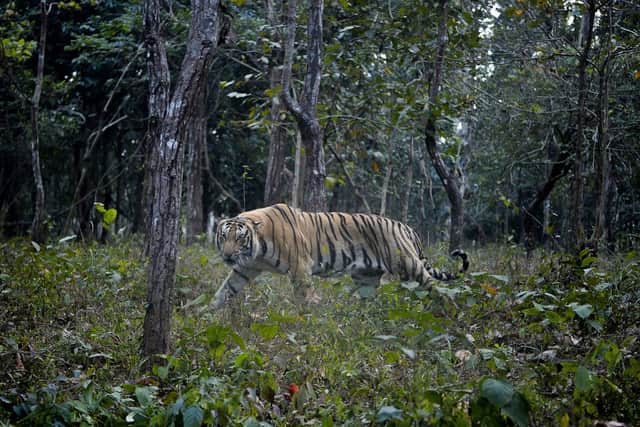Fighting extinction: Cambodia to import tigers from India to try and restore ‘extinct’ population
and live on Freeview channel 276
Cambodia's government has vowed to join the fight against extinction, after striking a new agreement with India to help restore its likely extinct tiger population.
On Friday (16 February), officials from the Southeast Asian nation announced they would be importing four tigers from India to begin a potential breeding programme, after its tigers were declared “functionally extinct” in in 2016 by the World Wide Fund for Nature (WWF). The last tiger spotted in the country was caught on a hidden camera in 2007, in the forests of eastern Mondulkiri province.
Advertisement
Hide AdAdvertisement
Hide AdEnvironment Ministry spokesperson Khvay Atitya told the Associated Press that the tigers - three female and one male - will be arrive from India by the end of the year, to be settled in a 90-hectare protected zone inside the Tatai wildlife sanctuary, in the western provinces of Koh Kong and Pursat. If everything goes smoothly, India has agreed to send 12 more tigers over the next five years, he added.


Hundreds of wildlife camera traps will be installed over the weekend to prepare for the new arrivals. They will be set up at one-kilometre intervals in the Cardamom Mountains over the next three months to make sure there will be enough deer and wild boar for the tigers to eat.
“This information will aid conservationists in devising plans to bolster big tiger populations, which may involve measures like breeding more wildlife or supplying domestic cattle or buffaloes,” the ministry said in a statement.
Cambodia’s undeveloped forests were once abundant with wildlife, but the communist Khmer Rouge’s brutal regime in the 1970s left the economy devastated, and poorer, rural communities ended up scouring the forests for wildlife.
Advertisement
Hide AdAdvertisement
Hide AdMany tigers were hunted and their body parts sold to China, where traditional medicine practitioners believe they possess medicinal and sex-enhancing properties. AP reports poaching is still rampant, and Cambodia's forest cover has been reduced by intense logging.
The entire world's tiger population is classified as 'endangered' by the International Union for Conservation of Nature (IUCN). There are about 3,200 tigers in only 13 countries globally, according to WWF, compared to approximately 100,000 in the early 20th century.
Comment Guidelines
National World encourages reader discussion on our stories. User feedback, insights and back-and-forth exchanges add a rich layer of context to reporting. Please review our Community Guidelines before commenting.
